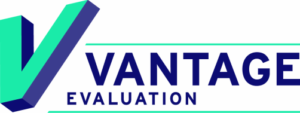
As nonprofits, we exist to help our communities and change the world for the better. But we can only achieve these great heights if we can keep our organizations afloat and pointed in the right direction. Data may feel irrelevant or even counterproductive to such an endeavor driven by heart and soul, but the right analytics can in fact amplify the good we can do – if we develop them mindfully and intentionally. To create human-centered insights that can accelerate our change-making, we need a data strategy.
There are four core elements to a complete data strategy for nonprofits:
o Sourcing accurate, reliable data
o Selecting or designing meaningful metrics
o Producing actionable insights
o Integrating those insights into decision-making
In this workshop, we will cover the core essentials of these four steps so you can effectively start and maintain a simple yet meaningful data strategy that will amplify the impacts your organization can have. Together we will complete a worksheet that will guide you through developing your core data strategy.
Alexandra Mannerings, Merakinos
This document is a “how to” guide for planning and implementing evaluation activities. The manual, based on CDC’s Framework for Program Evaluation in Public Health, is intended to assist managers and staff of public, private, and community public health programs plan, design, implement and use comprehensive evaluations in a practical way.
The strategy presented in this manual will help assure that evaluations meet the diverse needs of internal and external stakeholders. Such needs include assessing and documenting program implementation, outcomes, efficiency and cost-effectiveness of activities, and taking action based on evaluation results to increase the impact of programs.
Developing and executing evaluation efforts within a non-profit organization can be challenging. As with many areas of non-profit management (i.e., those that don’t involve direct service provision), implementing evaluation processes requires some upfront investment of time and money, and may only make sense once an organization has reached a certain size and complexity.
This resource lists the differences between qualitative and quantitative data, including the goals, methods, and focus of analysis for each. Use this resource when determining your evaluation method.
Contributed By:

This document outlines just a few of the most important tips and tricks to maximize your survey’s potential.
Contributed By:

This tip sheet provides a basic overview of analyzing multiple choice, scales, and open-ended questions.
Contributed By:

This tip sheet covers the dos and don’ts when designing qualitative questions.
Contributed By:

Use this checklist when preparing for, day-of, and immediately after a focus group.
Contributed By:

You may use this template when conducting a focus group. The main components of this consent form include the purpose of the focus group, a statement of voluntary participation, confidentiality, and incentive.
Contributed By:

This resource provides an overview of how to effectively budget for an evaluation. This information was presented by the Corporation for National & Community Service; you may access the slide deck from the presentation.